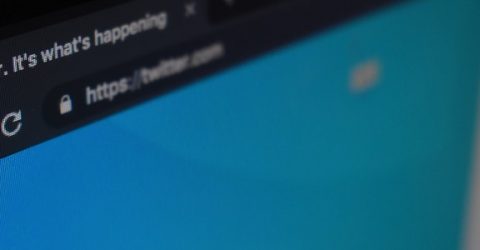A beginner’s guide to Twitter

Social media websites have deservedly come in for criticism in recent years, following a spate of news stories ranging from trolling to the misuse of personal data.
However, it’s an undeniable fact that the social media giants couldn’t resell our data if we weren’t so happy to hand it over in the first place.
Equally, posting controversial or minority opinions is bound to draw the ire of people who don’t agree – or simply don’t want to acknowledge your point of view.
Despite the growing vogue for no-platforming and attempting to silence anyone with an opposing ideology, social media platforms remain hotly-contested debate chambers.
And no platform stirs up debate quite like Twitter.
When it launched in 2006, this microblogging site restricted contributions (known as tweets) to 140 characters.
This was increased to 280 characters back in 2017, but brevity remains the key to building a Twitter presence.
It is possible to spread longer posts over multiple tweets, though there’s always a danger that users will only see the first or last tweet.
Tweet dreams
On paper, getting started with Twitter is as simple as choosing a username and adding a phone or email address, before ticking a couple of privacy policy boxes.
In reality, this will give you an empty account with no contacts, no history and no indication of who to follow.
Getting started with Twitter involves following accounts of interest. The site will recommend people linked to your email address if you provide it, while celebrities are easy to find.
A blue tick next to their name indicates they are the verified owners of an account in their name, as opposed to a parody account or impostor.
Every time you like, comment or share a post (known as retweeting), Twitter will make it more likely that you’ll see that contributor’s content in future timelines.
Your timeline is the vertically-scrolling heart of Twitter, where activities by people you follow are published in a non-chronological order.
As well as tweeting, you can exchange direct messages with people you follow and who follow you back – or anyone who’s willing to accept unsolicited DMs from strangers.
A more common method of communication is to include someone’s Twitter handle in a message, so it’s both publicly visible and flagged up to them as significant content.
This is the main method used by customers when contacting a company, and an entire industry has evolved around how firms manage these social media interactions.
Another way of attracting attention from third parties is to use hashtags – pioneered by Twitter and subsequently copied by other social media platforms.
Hashtags often crop up in relation to current events, enabling people to identify every recent tweet relating to that topic before participating in real-time discussions.
To this end, Twitter has a Trends for You window listing popular hashtags it thinks you may like, based on the accounts you follow and the things you’ve shown interest in.
This is the most visible clue about the icebergs of data social media platforms harvest from their users.
Every free service has to be paid for somehow, and social media sites cover their running costs by reselling voluntarily-provided personal information.
Too many twits…
Twitter has been likened to road rage. Because everyone is at a distance and protected by relative anonymity, they feel able to vent their spleen at anyone who displeases them.
There are certain topics guaranteed to wake the trolls, including radicalisation and the prospect of Scottish independence.
The ability to block replies from accounts you’re not connected to is a belated attempt at tackling trolling and preventing anonymous users projecting bile and vitriol at you.
Profiles bearing a generic egg avatar are rarely trustworthy, and accounts with less than 50 followers should be approached cautiously.
Even so, it’s possible to learn a great deal from Twitter. As a platform for sharing links to online content or discussing news and current affairs, it’s peerless.
However, user discretion is advised, especially while getting started with Twitter and working your way around this prickly yet indispensable social media platform.






